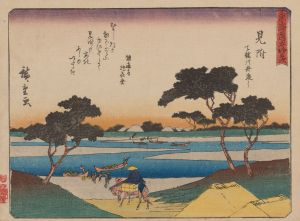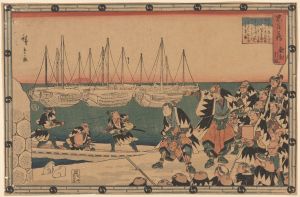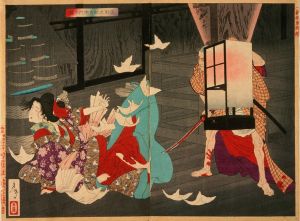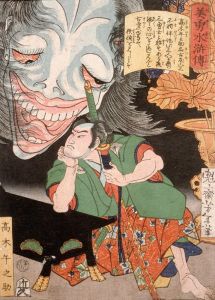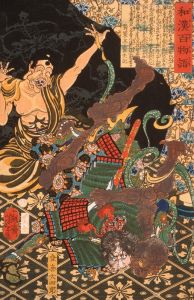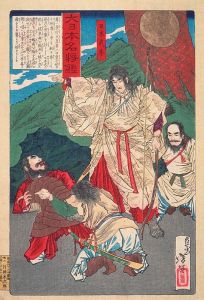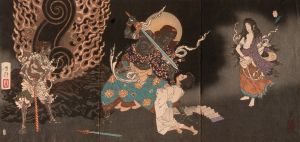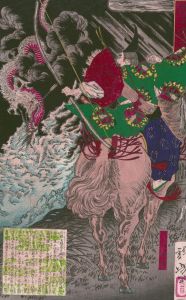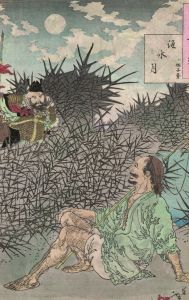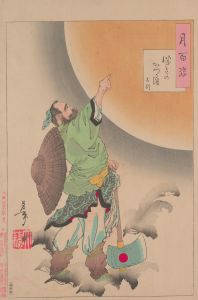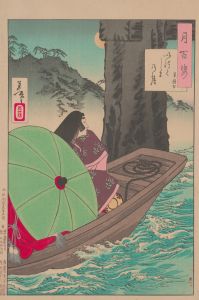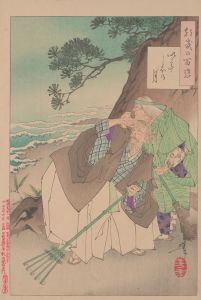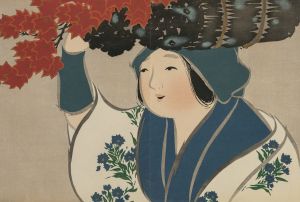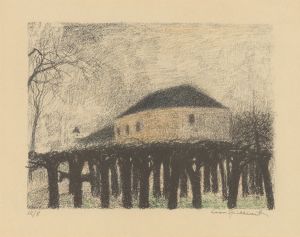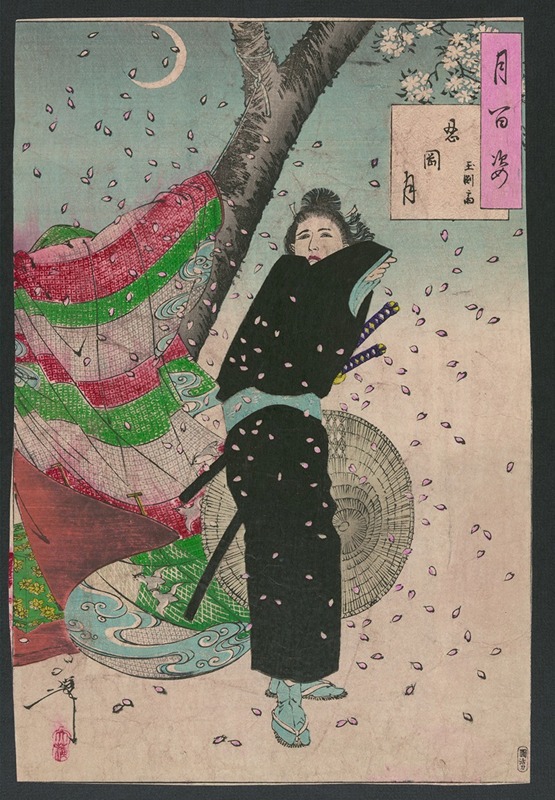
Shinobugaoka no tsuki
A hand-painted replica of Tsukioka Yoshitoshi’s masterpiece Shinobugaoka no tsuki, meticulously crafted by professional artists to capture the true essence of the original. Each piece is created with museum-quality canvas and rare mineral pigments, carefully painted by experienced artists with delicate brushstrokes and rich, layered colors to perfectly recreate the texture of the original artwork. Unlike machine-printed reproductions, this hand-painted version brings the painting to life, infused with the artist’s emotions and skill in every stroke. Whether for personal collection or home decoration, it instantly elevates the artistic atmosphere of any space.
"Shinobugaoka no tsuki" (The Moon at Shinobugaoka) is a woodblock print created by the renowned Japanese artist Tsukioka Yoshitoshi (1839–1892). Yoshitoshi is widely regarded as one of the last great masters of the ukiyo-e tradition, a genre of Japanese art that flourished during the Edo period and into the early Meiji era. His works are celebrated for their innovative compositions, technical mastery, and emotional depth, often blending traditional themes with modern influences.
This print is part of Yoshitoshi's acclaimed series "Tsuki hyakushi" (One Hundred Aspects of the Moon), which was produced between 1885 and 1892. The series consists of 100 individual prints, each depicting a scene inspired by historical, literary, or folkloric references, unified by the recurring motif of the moon. "Shinobugaoka no tsuki" is one of the entries in this series and exemplifies Yoshitoshi's ability to evoke mood and narrative through his art.
The scene in "Shinobugaoka no tsuki" portrays a tranquil moment under the moonlight at Shinobugaoka, a location historically associated with the Edo period. The composition features a lone figure, often interpreted as a samurai or a nobleman, gazing contemplatively at the moon. The setting is characterized by its serene atmosphere, with the moon casting a soft glow over the landscape. Yoshitoshi's use of delicate lines and subtle color gradients enhances the ethereal quality of the scene, drawing the viewer into the quiet beauty of the moment.
Yoshitoshi's "One Hundred Aspects of the Moon" series reflects his deep interest in storytelling and his ability to capture the essence of Japanese culture and history. Each print in the series is accompanied by a short inscription or poem, providing context or insight into the depicted scene. These inscriptions often draw from classical Japanese literature, Noh theater, or historical events, adding layers of meaning to the artwork.
"Shinobugaoka no tsuki" is a testament to Yoshitoshi's artistic vision during the later years of his career, a period marked by both personal struggles and creative triumphs. Despite the decline of ukiyo-e as a dominant art form in the face of modernization and the introduction of Western artistic techniques, Yoshitoshi's work continued to resonate with audiences, preserving the legacy of traditional Japanese woodblock printing.
Today, "Shinobugaoka no tsuki" and other prints from the "One Hundred Aspects of the Moon" series are highly regarded by art historians and collectors. They are considered masterpieces of late ukiyo-e and are frequently displayed in museums and exhibitions dedicated to Japanese art.





